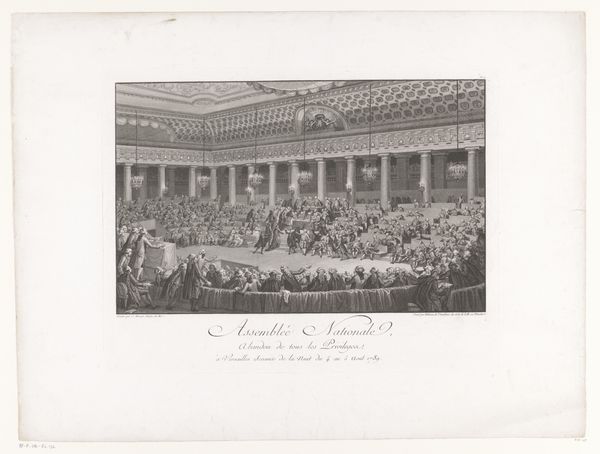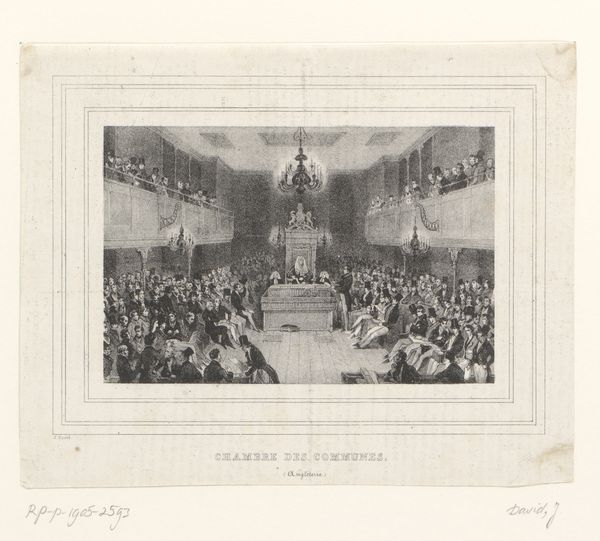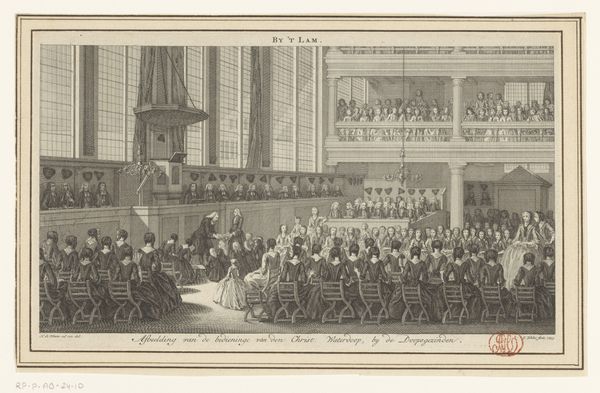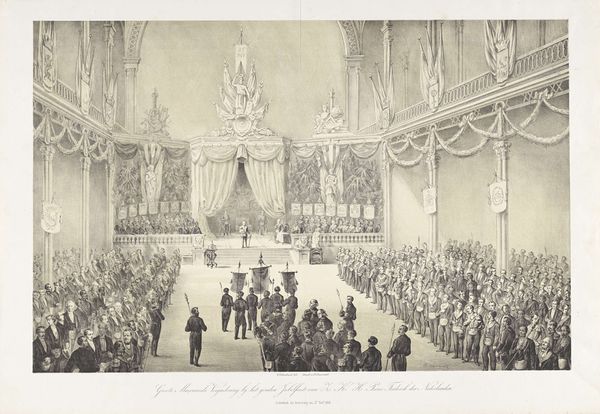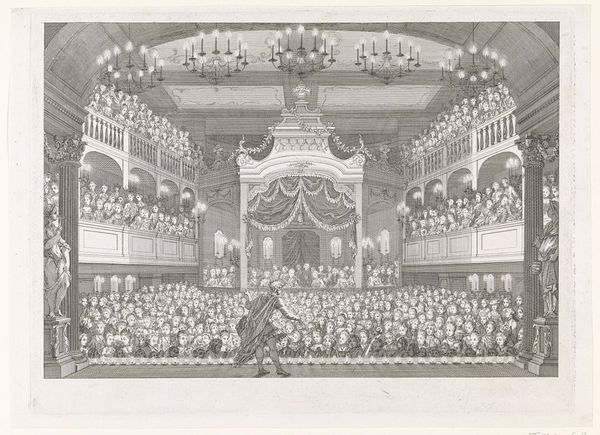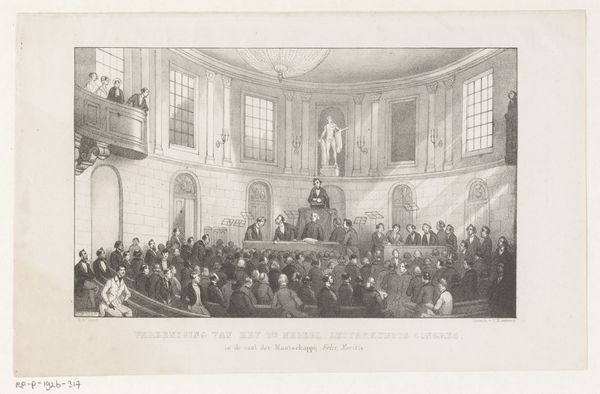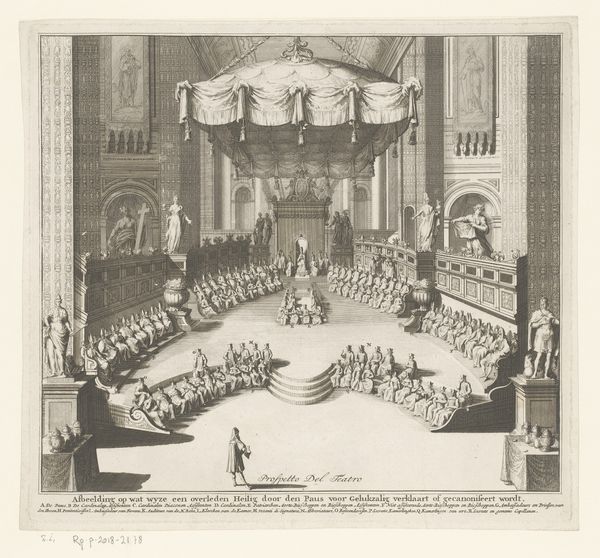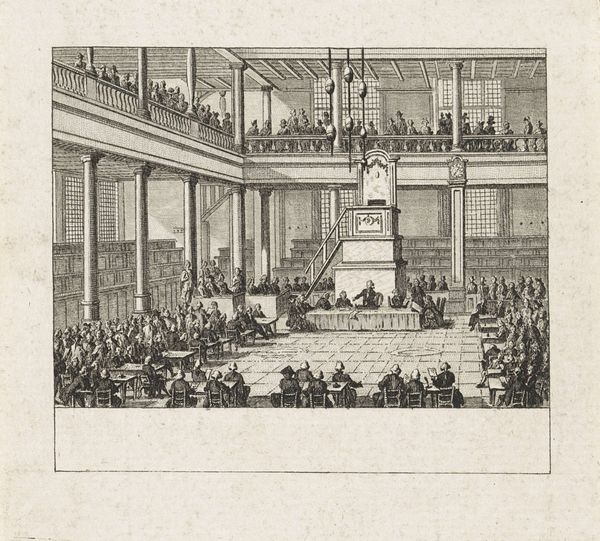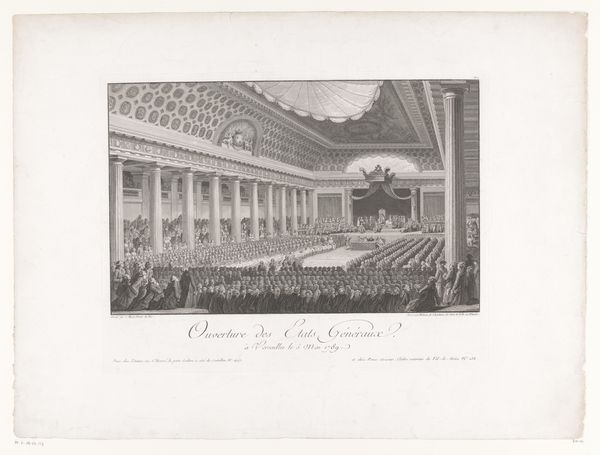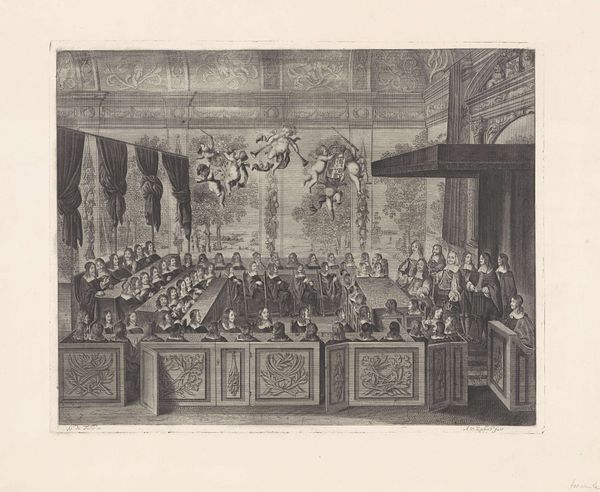
#
photo of handprinted image
#
aged paper
#
photo restoration
#
parchment
#
light coloured
#
colourisation
#
old engraving style
#
archive photography
#
historical photography
#
old-timey
Dimensions: height 358 mm, width 540 mm
Copyright: Rijks Museum: Open Domain
Eduard Gustav May created this print of the Frankfurt National Assembly sometime in 1848 or 1849, using a technique known as steel engraving. The making of a steel engraving demanded highly specialized skills. First, the design was incised into a polished steel plate using a variety of tools to create fine lines and details. This was a painstaking process, requiring exceptional control and precision. The engraved plate was then inked, and the surface wiped clean, leaving ink only in the engraved lines. Finally, damp paper was pressed against the plate, transferring the ink to create the print. Compared to other printmaking techniques such as woodcut or etching, steel engraving allowed for finer detail and a larger edition size, as the steel plate was more durable. This was crucial for disseminating images widely during a time of political upheaval and social change. The very act of creating and distributing images like this one was part of the revolutionary process. In this context, the steel engraving isn't just a document, it’s a powerful tool for shaping public opinion and historical memory.
Comments
No comments
Be the first to comment and join the conversation on the ultimate creative platform.
